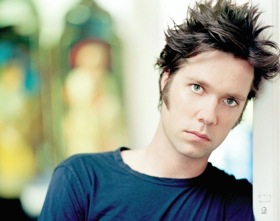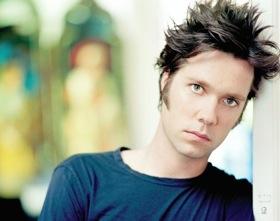The San Francisco Symphony last week tried to attract a younger audience, with a populist bent. While I applaud the idea (my generation is generally poor at attending the symphony), the success lay in increased ticket sales, not in delivery of a pleasing aesthetic experience.
Of the three composers on the program that I heard on Thursday, Darius Milhaud is one whom, to be honest, I have never really loved. His style seems bombastic and over the top and is never as emotionally engaging as it is just big. His work Le Création du monde was no surprise for me; Milhaud grabbed sounds from Gershwin and put it with his own rather European sense of orchestration. While there was much that was exciting, even gripping, in terms of orchestration and colors (I particularly liked the use of soprano timpani), I found the piece to be grotesque in stature. Each jazz-infused line felt more like a bad rip-off than the inflection or homage intended. That being said, the San Francisco Symphony sounded in top form in its performance. The work calls for a smaller, chamber orchestra, and it was truly exciting to see the Symphony playing with such excellent communication. Each player appeared to communicate energy across the stage to their colleagues, creating a lively, exciting performance.

Rufus Wainwright’s Five Shakespearean Sonnets were, clearly, the focal point of the evening. The Milhaud was there to entertain the unusually young audience, and the Kurt Weill work (after the Wainwright) was meant to keep them there. But the Wainwright itself was not at all what I was hoping for.
It is true that orchestras try to draw in a younger crowd with popular music, and that these shows achieve varying degrees of success. I have, in the past, liked events similar to this, where a vernacular star or group injects some adrenaline into what can sometimes be an aging institution. However, for me, this piece was unsuccessful. Wainwright’s songs showed little understanding of the text; there was no portrayal of what was going on in the lyrics; there seemed to be no separation between the lines, stanzas, and poems that were “happy” and those that were “sad”; and the range of nuances that Shakespeare infused into his poems was not well-explored. Yet Wainwright’s voice, his performance, was stunning beyond compare (each word poured into your ears in such a soothing manner that I was periodically able to remember why I love his music) — but at the conclusion I felt I understood nothing new at all about Shakespeare from the composer/singer’s music.
I might have enjoyed the concert more had Wainwright chosen to set texts of his own. The Shakespeare sonnets that he selected are incredibly complex emotionally, and I don’t think that worked for his singing of, well, pop songs. True, Wainwright has the ability to be emotionally complicated, even riveting, but in dealing with Shakespeare he simply found melodies that fit the rhythm of the words rather than probing the emotions behind them. It’s easy to see how a sonnet has repetition in its phrase structure, and to realize that every line is in iambic pentameter, but that’s no reason to simply repeat the same melodies, even for the rhyming couplet at the end of each sonnet.
Still, his performance was stellar. The artist was engaging to watch and a delight to hear. I understand the Symphony’s desire to draw in fresh audiences to hear this premiere, but I wish they could have been better served, even retained.
Bringing Up the Rear in a Dwindling House
The concert ended with Kurt Weill’s Second Symphony, an excellent choice for an evening of this type. Obviously, the show was designed to capture the attention of Rufus Wainwright fans, and intended to get them interested in the world of symphonic music. In some ways, it worked, as the crowd was much younger than any I have seen at Davies Symphony Hall in some time. Unfortunately, though, the plan backfired, as the audience shrank considerably after the Wainwright, and the Weill was poorly attended.
That being said, the Second Symphony was beautifully well-played. There was constant excitement and energy in this very populist piece. Guest conductor Michael Francis had a light touch with his baton, and the orchestra seemed to dance in the fast movements. The piece itself is great fun, and most enjoyable, but lacks the depth of expression of a greater work.
I was disappointed that the San Francisco Symphony seemed to try so hard to appease Wainwright fans with populist pieces; it seemed demeaning. We should not feel the need to play music for audiences that are lightweight in terms of their musical appreciation, though they may be numerous (and perhaps profitable). Do we actually believe that if certain listeners like Rufus Wainwright, they won’t enjoy Brahms? Or Stravinsky? Programming young Wainwright with names more recognizable than Weill and Milhaud might have been more successful at retaining an appreciative audience.

